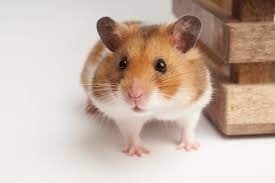
The hamster, the popular pet, is a small rodent. It is distinguished by its short tail, fat legs, and small ears. Its colors vary between black, grey, brown, white, yellow, and red, or are an attractive combination of multiple shades. Hamsters are very active and need many opportunities to move, in addition to showing great understanding and affection towards humans.
Zolux Rody-3 three-level cage for rodents
Disease prevention:
Hamsters are affected by only a few natural diseases. However, they are susceptible to a range of diseases from other animals and even humans. Categories such as the Teddy Bear and color variations other than the golden hamster appear to be more sensitive to disease.
Because hamsters are nocturnal and are not closely monitored, many illnesses go undetected until it is too late to seek medical help. Frequent inspection of all hamsters by their owner is vital for early detection of diseases.
Sick hamsters often become moody and bite frequently. They are unwilling to move and walk roughly when necessary. The eyes often appear dull and sunken and there may be discharge. Often, sick hamsters stop eating and may lose weight quickly. Weight loss resulting from dehydration (as a result of diarrhea) is another sign of illness. (Weight loss and dehydration are two very common signs of illness.) Dehydration will quickly lead to death.
Diseases and disorders
Obesity:
Owners who overfeed their hamsters with rich grains and seeds are most often responsible for this condition. Eating unhealthy foods such as pizza, cookies, candy, and donuts increases the risk of obesity and destroys the benefits of providing a balanced diet.
Lengthening canines:
Hamsters' fangs at the front of their mouth grow continuously throughout their lives. The length of the canines usually remains at the appropriate level thanks to the natural wear that occurs between the upper and lower canines. However, genetic defects in the canines or jaws, injury to the jaw(s) or disease of the jaws or canines can cause the canines to not meet properly. This deviation causes one or more canines to lengthen, causing injury to the mouth. Canines are trimmed as needed by your veterinarian.
Symptoms: weight loss, increased salivation, bleeding from the mouth, seeing fangs outside the mouth, difficulty eating, scratching the face with the palm.
Tumors:
Cancerous tumors are common in hamsters. Both male and female hamsters suffer from cancer, but it is considered more likely to occur in females due to the large number of tumors arising from the female reproductive tract. Tumors involving the organs that secrete hormones (thyroid and adrenal glands) are among the most common types of tumors. These tumors cause hair loss, behavioral changes, and other signs. Some of these tumors can be removed by surgery under general anesthesia.
Tumors are easier to remove when they are small than to allow them to grow larger. Even benign tumors can cause significant harm to a hamster if the tumor is large enough. A tissue examination of the tumor can be used to determine the type of cancer and the long-term outlook for the pet.
Abscesses, lacerations, and ulcers:
Many types of bacteria enter through bite wounds or other injuries and cause abscesses or ulcers. Treatment with antibiotics is usually curative, but in some cases surgery may be required to open large abscesses or repair tears. In rodents, the pus is dense and resists simple drainage. A combination of antibiotics and surgery seems to be the best option.
Sinus cheek abscesses occur when bedding material or food penetrates the lining of the mouth. The swelling caused by an abscess is indistinguishable from normal swelling associated with a food-filled pocket. However, the abscess and swelling will continue to appear after the food and bedding materials are removed. Continuous enlargement of one or both sinuses is a sign of a problem.
Wet Tail:
The most serious disease resulting from mineralization of the intestine in hamsters is “wet tail”, which is a bacterial infection of the intestine. This condition most often affects hamsters at the age of weaning, but can occur in hamsters of all ages. Since most hamsters offered in pet stores are weaning age or just under, wet tails are very common. Teddy Bear hamsters are more susceptible to this disease. Treatment is difficult and the disease is often fatal within 48 hours after the onset of symptoms. It is worth noting that this disease is not transmitted to humans.
Symptoms:
Loss of appetite, laziness, hunched body posture, unkempt fur, watery diarrhea, wet/dirty anal area, rectal distension.
Wet Mullen Country Hamster 3kg
The most common signs of illness or injury
Hamsters will usually show one or more of these signs if they are dealing with illness or injury
Hamster disorders and diseases.
- 1. Anorexia
- 2. Inactivity
- 3. Gather in the corner
- 4. Tangle or mess in the fur
- 5. Sneezing, sniffling, and/or runny nose or eyes
- 6. Moisture around the tail
- 7. Diarrhea
- 8. Hair loss (often a sign of parasites or allergies)

